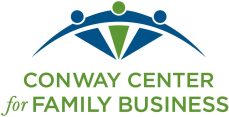Top 10 Ideas for Businesses and Business Owners
From Conway Service Provider Member KeyBank
Year-end tax planning for 2019 takes place against the backdrop of legislative changes that occurred in late 2017 that fundamentally altered the tax rules for individuals and businesses. The Tax Cuts and Jobs Act (TCJA) was the largest tax law change in 30 years, and 2018 was the first year that TCJA changes were in effect. For businesses, the TCJA cut the corporate tax rate to 21%; the corporate AMT is now gone; there are new limits on business interest deductions; and the law significantly liberalized expensing and depreciation rules. The TCJA also introduced a new deduction for noncorporate taxpayers with qualified business income from pass-throughs.
The following are a few ideas that business owners can implement before 2019 winds down:
1) Review retirement plan options Qualified retirement plans can be a powerful way to defer business income and lower current tax liabilities. Individuals who already have these plans should use the end of the year as an opportunity to fully fund their contributions, while business owners who do not should consider implementing a plan after a review of the potential benefits and tax savings. Along with defined contribution plans, small business owners might consider defined benefit plans, cash balance plans, or combinations of the two. For self-employed individuals, a Keogh plan must be set up before the end of the year. However, a self-employed individual may establish a simplified employee pension (SEP) plan up to the extended due date of his or her income tax return. A self-employed individual may make contributions to either plan up to the filing date of a timely filed income tax return.
2) Take advantage of the business expensing election For qualified property placed in service in tax years beginning in 2019, the maximum amount that may be expensed under the Code Sec. 179 dollar limitation is $1,020,000, and the beginning-ofphaseout amount is $2,550,000. These limits will be adjusted for inflation in 2020. The expensing deduction can be claimed regardless of how long the property is held during the year. Therefore, property acquired and placed in service in the last days of the tax year, rather than at the beginning of the following year, can result in a full expensing deduction for the earlier year.
3) Take advantage of “bonus” depreciation Most new as well as used machinery and equipment bought and placed in service in 2019 qualifies for a 100% bonus first-year depreciation deduction. Additionally, under the TCJA, for the first time ever, the additional first-year depreciation deduction may be claimed for used as well as new property. Bonus depreciation deduction is permitted without any proration based on the length of time that an asset is in service during the tax year. As a result, a 100% write-off may be claimed even if qualifying assets are in service for only a few days in 2019. The limit on annual depreciation deductions for passenger autos (including trucks, vans, and electric automobiles) acquired by the taxpayer and placed in service by the taxpayer during calendar year 2019, for which the bonus first-year depreciation deduction applies, are extra-generous now. Heavy vehicles, such as SUVs, pickup trucks, or vans — those that are built on a truck chassis and are rated at more than 6,000 pounds gross (loaded) vehicle weight — are exempt from the luxury-auto dollar caps because they fall outside of the definition of a passenger auto. Thus, thanks to 100% bonus depreciation under Code Sec. 168(k), the entire cost of a heavy vehicle bought in 2019 and used 100% for business may be deducted this year.
4) Maximize the passthrough business income deduction (Section 199A deduction) For tax years 2018 through 2025, a new deduction is available equal to 20% of qualified business income from partnerships, S corporations, and sole proprietorships. If you are in a non-specified service trade or business, but you exceed the income limitations and thus are subject to the additional W-2 wage and capital (qualified property) limitation, you should consider making additional qualified capital purchases or increasing wages to increase your available qualified business income (QBI) deduction.
5) Take advantage of the ability to use the cash method of accounting Due to the TCJA, there was a five-fold increase in a key gross receipts test (during a three-year testing period, a company’s average annual gross receipts don’t exceed $25 million, an increase from $5 million prior to the TCJA.) This means many more businesses can choose to use the cash (rather than the accrual) method of accounting. Cash method taxpayers may find it easier to defer income and accelerate expenses, for example by holding off billings until next year or by accelerating expenses by paying bills early or by making certain prepayments.
6) Splitting business income with family members A business owner can split business income by gifting family members an interest in the business. An S-corporation business owner can gift non-voting shares without giving up control. A C corporation business owner can gift common stock, preferred stock, or debt securities if the capital structure of the corporation permits. If the business is a partnership or an LLC taxed as a partnership, a partner can gift a portion of a partnership interest. Children can work for the family business. Placing the child on the business payroll enables the child to make deductible IRA contributions. Putting children to work may also help avoid the kiddie tax, which now uses the trust and estate tax income tax rates. The kiddie tax only applies to children whose earned income does not exceed one-half the amount of their support. Putting children on the family payroll may increase their earned income to an amount more than one-half their total support, thus, exempting their unearned income from the kiddie tax.
7) Plan to take advantage of the 1202 Qualified Small Business (QSB) stock exclusion With a new 21% corporate tax rate and the potential to exclude 50%, 75%, or 100% of the gain from the sale or exchange of qualified small business stock held for more than five years, C corporations and their advisors must plan carefully and take proactive steps to ensure the stock meets the definition of QSB stock. Including testing the gross adjusted basis of assets upon the issuance of shares, to valuing, measuring, and documenting the value of assets annually for purposes of the active business requirement to analyzing the effect of any corporate redemptions. The Section 1202 exclusion is generally not available to exclude gain on the sale of S corporation stock or a partnership interest.
8) Time business income and deductions Although tax rates for 2019 and the next year will remain the same (with modest increases for inflation), for businesses that are pass-through entities whose business income and deductions get passed-through to owners (such as sole proprietorships, S corporations, partnerships, and LLCs), the time-honored approach of deferring income and accelerating deductions to minimize taxes still works. For those taxpayers that will remain in the same tax bracket from year-to-year, deferring income will not cause them to be taxed at a lower rate, it just delays the recognition of income bringing into play time value of money considerations. However, if you expect to be in a lower tax bracket in 2020, then you should consider deferring income or accelerating deductions using strategies such as paying deductible expenses via credit card, prepaying allowable expenses that can be claimed as deductions, or waiting to invoice customers until next year. For accrual basis taxpayers who want to defer the recognition of income, consider postponing the actual right to payment for services or merchandise delivered. On the other hand, if you expect to be in a higher tax bracket in 2020, take the opposite approach. Accelerate income if possible and postpone expenses until 2020.
2019 Year-End Tax Planning Guide: Top 10 Ideas for Businesses and Business Owners 3 of 4
9) Revisit exit planning strategy and wealth transfer strategies Considering the TCJA and the still low current interest rate environment, revisit your exit planning strategy and wealth transfer strategies. Strategies such as Grantor Retained Annuity Trusts (GRATs), Charitable Lead Annuity Trusts (CLATs), the use of Intra-Family lending, and the use of loans or sales to grantor trusts work well in the low interest rate environment. With the federal estate and gift exemption amount nearly doubled now to nearly $11.4 million per person, those with taxable estates should make use of the increased exemptions with the use of lifetime gifts.
10) Review how the SECURE Act impacts your business In May 2019, the House of Representatives practically unanimously passed the Setting Every Community Up for Retirement Enhancement Act of 2019 (the “SECURE” Act). As we go to press, the Senate has not yet passed their version of the bill. Put simply, the Act allows small businesses to band together to offer retirement plans or Multiple Employer Plans (MEPs), has several provisions to encourage employers to offer lifetime income annuities as options within retirement plans, and extends some prior tax credits for small employers to maintain retirement plans. These provisions are intended to make it simpler, easier, and less costly for more businesses to sponsor retirement plans for their employees. The path ahead for the SECURE Act is not clear. If this Act does not pass, other future retirement focused legislation could replace this effort.
For more information, please contact:
Clay R Daney, MBA, CWS®
Relationship Manager
Vice President
88 East Broad Street, 2nd Floor
Columbus, OH 43215
Office: 614-460-3483
Any opinions, projections or recommendations contained herein are subject to change without notice and are not intended as individual investment advice. This material is presented for informational purposes only and should not be construed as individual tax or financial advice. KeyBank does not provide legal advice. Investment products are:
©2019 KeyCorp. KeyBank is Member FDIC. 191023-682348
NOT FDIC INSURED • NOT BANK GUARANTEED • MAY LOSE VALUE • NOT A DEPOSIT • NOT INSURED BY ANY FEDERAL OR STATE GOVERNMENT AGENCY

